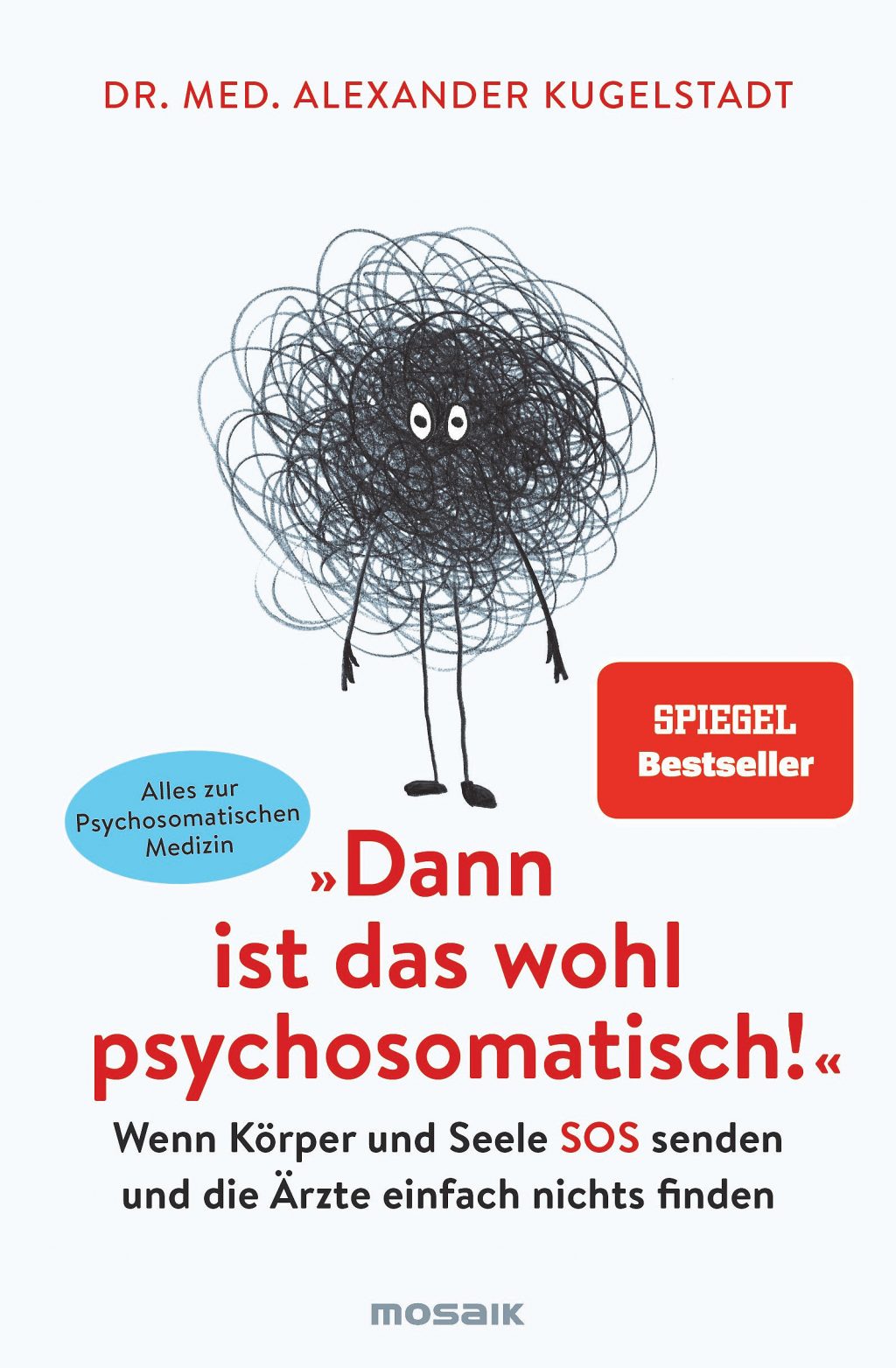“Then it’s probably psychosomatic!” One of the patients presenting to the doctor with a backache must have heard this sentence. Because often there is no reason for physical complaints. Then begins the work of Alexander Kogelstadt, a specialist in psychosomatic medicine and psychotherapy, and the author of the book with this title.
In the first part, Kogelstadt attempts to convey the fundamentals of his topic, such as the importance of past experiences (in the womb and in the first years of life) to psychological weakness or resilience, and the influence of feelings and the interaction between body and soul. The author accepts Sigmund Freud’s theory of transformation without criticism, according to which repressed feelings are transformed into physical symptoms – although this view is archaic in modern psychosomatics. However, at the same time, he also cites more recent findings from neuroscience and developmental psychology.
Then the doctor describes head and back pain, trichotillomania, eating disorders, depression, heart conditions such as high blood pressure, trauma-related disorders, and skin conditions such as neurodermatitis. He describes depression as a “typical psychosomatic disease” because it affects the mind and body. The author does not justify his choice of clinical pictures, it seems arbitrary. He may encounter these complaints particularly often in his practice. But the reader wonders whether there is a clearly defined group of psychosomatic illnesses? Why isn’t tinnitus and sudden hearing loss, for example, but trichotillomania, eating, and trauma-related disorders?
Today we know that the soul and the body interact primarily with all diseases. Who we are and what we have seen often have an impact on whether and how organic diseases break out. Physical illnesses such as Parkinson’s disease also affect the psyche. Thus, a clear separation between a purely psychic, a purely bodily, or a psychosomatic is usually not possible.
Advice against “a psychosomatic trap”
The author calls for taking physical and mental phenomena seriously. It also provides a lot of advice so that the reader does not fall into what he calls a psychosomatic trap. In the event of a drive deficit, for example, potential underlying hypothyroidism must always be clarified.
It also offers suggestions on how to boost your health, for example through self-care, exercise and exercise. Most of them are well known. On the other hand, the personal stories are interesting, for example when he tells us how he picked up a hobby from his childhood a few years ago or what he wrote in his gratitude diary one evening after working on this book.

“Explorer. Communicator. Music geek. Web buff. Social media nerd. Food fanatic.”







More Stories
A fossilized creature may explain a puzzling drawing on a rock wall.
MrBeast Sued Over ‘Unsafe Environment’ on Upcoming Amazon Reality Show | US TV
Watch comets Lemmon and SWAN approach Earth today